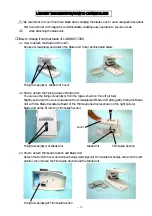
12
2.
OPERATION
2.1
Safety
The outputs from all units in the range are very dangerous, and if used incorrectly could be
fatal. The unit must only be installed, operated, and maintained by suitably qualified and
trained personnel.
It is essential to follow accepted safety procedures and local health and safety regulations and
guidelines when installing and operating high voltage equipment. A risk assessment should
be undertaken on both the installation and the working procedures to ensure the safety of test
personnel and all other personnel.
2.1.1
Installation
The unit is designed to be installed and used in an indoor environment.
2.1.1.2 Test Area
The unit must be installed in a suitable high voltage test area completely enclosed by walls or
some type of physical barrier. Appropriate controls and safety measures must be applied to
this area including interlocks connected to the supply or HV unit interlock to ensure that the
unit cannot be switched on unless the area is secure. Refer to BS EN50191:2001 and IEEE
Std 510-1983 for further details of suitable test enclosures. The test area must also be
identified with suitable signs.
2.1.1.3 Mains supply
The unit must be connected to a suitable supply via an approved and suitably rated mains
connector with earth connection.
2.1.1.4 Earthing
The unit must be securely earthed. The earth terminal on the rear of the unit may be
connected to a low impedance local earth if required.
2.1.2
Operation
It is essential that safe working practices are maintained when conducting high voltage
testing. Safe working procedures must be implemented to accepted standards.
2.1.2.1 Interlocks
The KV5-100 mk2 series are provided with an external interlock circuit that may be used to
link to interlock switches on the high voltage test area.
An interlock should be considered to be a safety back-up feature. An interlock should not be
regarded as a substitute for adequate safety rules and proper operator vigilance.








































